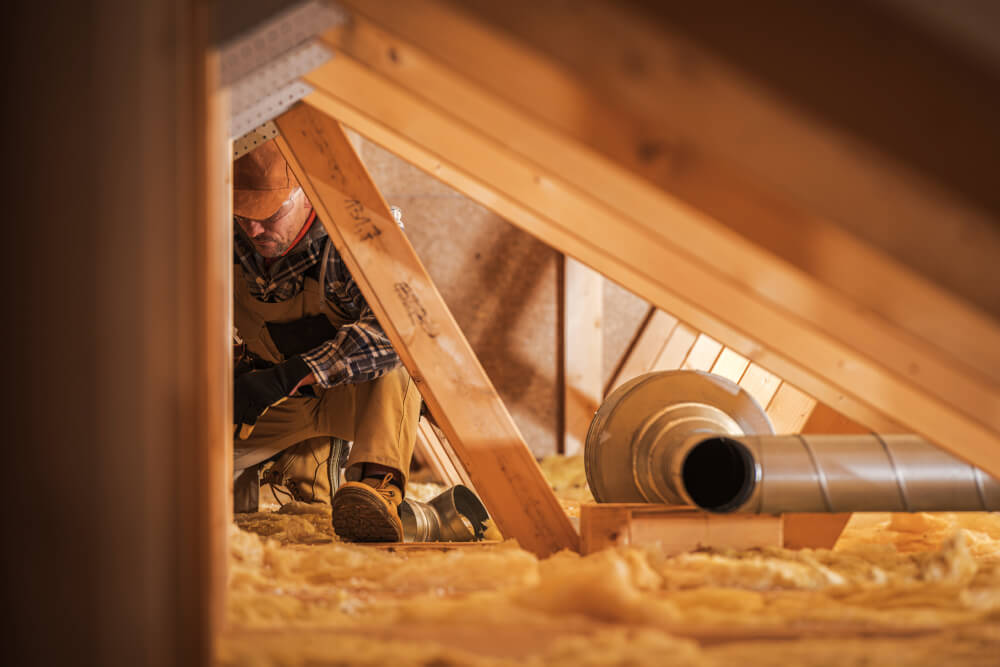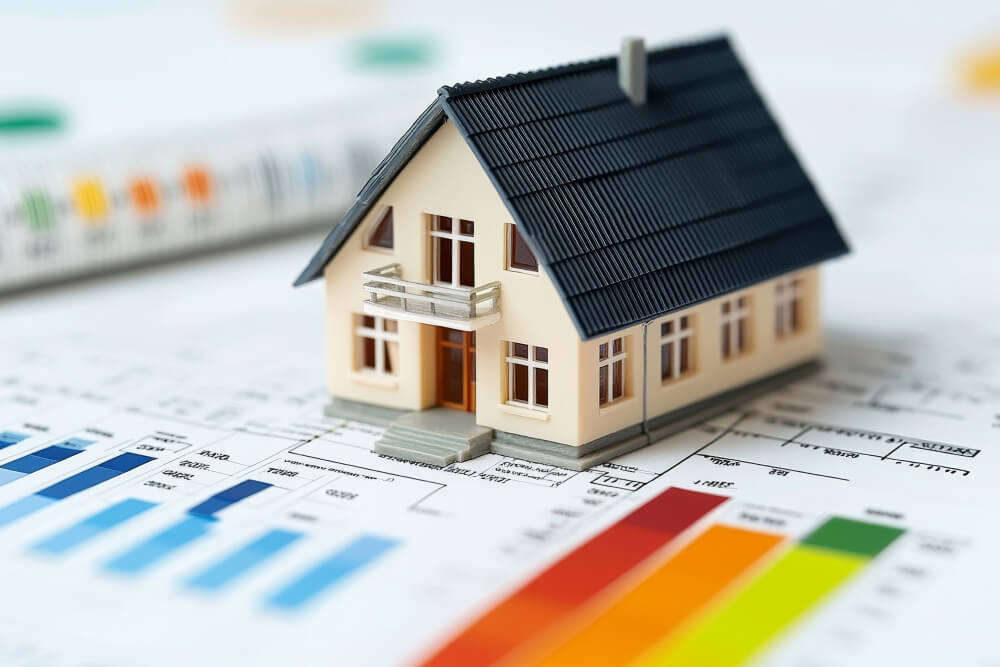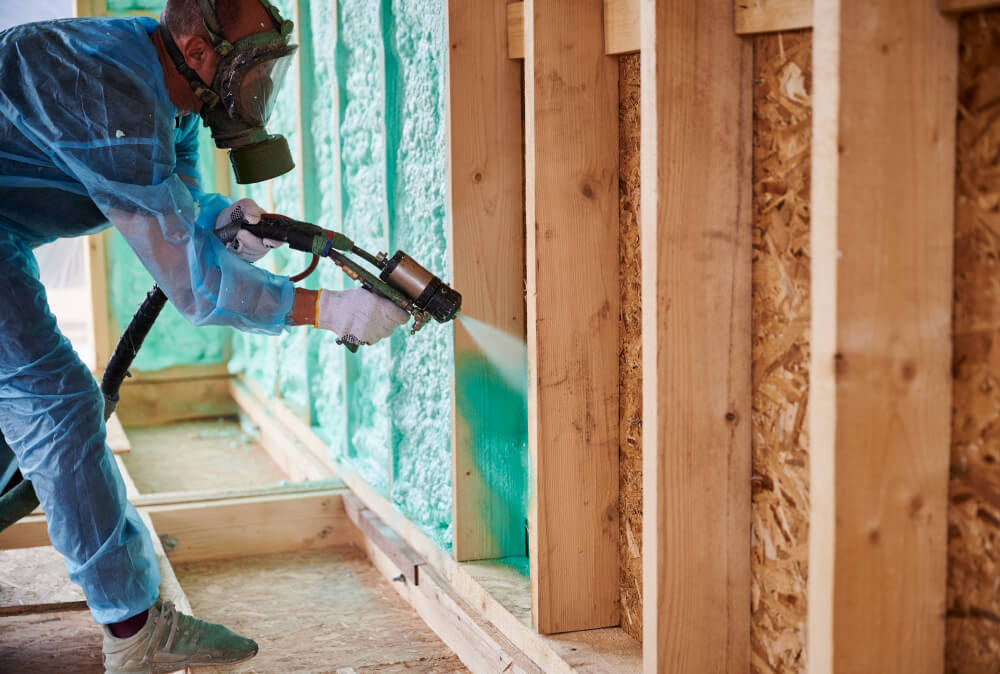Understanding Insulation
Insulation is designed to slow down the transfer of heat, keeping your home warmer in the winter and cooler in the summer. The effectiveness of insulation is measured by its R-value, which indicates its resistance to heat flow. The higher the R-value, the better the insulation’s thermal performance. Different insulation materials offer varying R-values and are suited for different parts of your home.
Types of Insulation Materials
- Fiberglass Insulation
- Description: Fiberglass insulation is made from fine glass fibers and is one of the most common insulation materials.
- Forms: Available in batts, rolls, and loose-fill.
- R-Value: Approximately R-2.9 to R-3.8 per inch.
- Applications: Suitable for walls, attics, floors, and ceilings.
- Benefits: Cost-effective, easy to install, non-combustible.
- Considerations: Requires protective gear during installation to avoid irritation from glass fibers.
- Cellulose Insulation
- Description: Made from recycled paper products, treated with fire retardants.
- Forms: Loose-fill or blown-in.
- R-Value: Approximately R-3.2 to R-3.8 per inch.
- Applications: Ideal for attics, walls, and retrofitting older homes.
- Benefits: Eco-friendly, good thermal and sound insulation properties.
- Considerations: Can settle over time, reducing effectiveness.
- Spray Foam Insulation
- Description: A liquid foam that expands upon application to fill gaps and create an airtight seal.
- Forms: Open-cell and closed-cell spray foam.
- R-Value: Open-cell: R-3.6 to R-4.3 per inch; Closed-cell: R-6 to R-7 per inch.
- Applications: Excellent for walls, roofs, attics, and basements.
- Benefits: Superior air sealing, high R-value, moisture barrier.
- Considerations: Higher cost, requires professional installation.
- Rigid Foam Insulation
- Description: Rigid panels of foam plastic, often used for insulating foundations, walls, and roofs.
- Forms: Polystyrene (EPS, XPS) and Polyisocyanurate.
- R-Value: EPS: R-3.6 to R-4.2 per inch; XPS: R-5 per inch; Polyisocyanurate: R-6.5 to R-7 per inch.
- Applications: Suitable for exterior walls, roofs, basement walls, and crawl spaces.
- Benefits: High R-value, moisture resistance, structural support.
- Considerations: Must be covered with a thermal barrier when used indoors.
Join HICP Homeowner’s Alliance
Connect with experts, get special discounts and enjoy member benefits
- Mineral Wool Insulation
- Description: Made from molten rock or industrial waste (slag).
- Forms: Batts, rolls, and loose-fill.
- R-Value: Approximately R-3.3 to R-3.7 per inch.
- Applications: Ideal for walls, attics, and floors.
- Benefits: Fire-resistant, good soundproofing, does not absorb water.
- Considerations: Heavier than fiberglass, higher cost.
- Cotton (Denim) Insulation
- Description: Made from recycled denim and cotton fibers.
- Forms: Batts.
- R-Value: Approximately R-3.5 per inch.
- Applications: Suitable for walls, attics, and floors.
- Benefits: Eco-friendly, good sound absorption, non-toxic.
- Considerations: Higher cost compared to traditional materials.
- Reflective or Radiant Barrier Insulation
- Description: Consists of reflective foil, typically installed in attics.
- Forms: Sheets or rolls.
- R-Value: Not rated by R-value; performance depends on the installation.
- Applications: Primarily used in attics to reflect radiant heat.
- Benefits: Reduces cooling costs in hot climates.
- Considerations: Less effective in cold climates, requires air space to function properly.
- Foam Board Insulation
- Description: Rigid panels made from various foam plastics.
- Forms: Polystyrene (EPS, XPS), Polyisocyanurate.
- R-Value: Varies by material, typically R-3.6 to R-7 per inch.
- Applications: Walls, roofs, foundations, and basements.
- Benefits: High R-value, moisture resistance, easy to install.
- Considerations: Must be covered for fire safety indoors.
- Aerogel Insulation
- Description: A lightweight, advanced material known for its extremely low thermal conductivity.
- Forms: Blankets, sheets, and particles.
- R-Value: Up to R-10 per inch.
- Applications: High-performance applications, such as windows, walls, and specialty projects.
- Benefits: Excellent thermal performance, lightweight, thin profile.
- Considerations: High cost, limited availability.
Choosing the Right Insulation Material
Selecting the right insulation material depends on several factors, including your climate, the specific area of your home you’re insulating, and your budget. Here are some tips to help you choose:
- Climate Considerations: In colder climates, insulation with a higher R-value is crucial for retaining heat. In warmer climates, reflective insulation can help reduce cooling costs.
- Application: Different parts of your home may require different types of insulation. For example, attics benefit from loose-fill or spray foam, while walls may require batts or rigid foam.
- Budget: While some materials like spray foam and aerogel offer superior performance, they come at a higher cost. Weigh the long-term savings against the initial investment.
- Environmental Impact: Consider eco-friendly options like cellulose or cotton insulation if sustainability is a priority for you.
Installation and Maintenance
Proper installation is key to maximizing the benefits of your chosen insulation material. While some insulation types, like batts and rolls, can be installed by homeowners, others, such as spray foam, require professional installation. Regular maintenance and inspections can help identify any issues, such as gaps or settling, ensuring your insulation remains effective.
Conclusion
Choosing the right insulation material for your home is a crucial step toward improving energy efficiency, comfort, and overall sustainability. By understanding the different types of insulation materials and their respective benefits, you can make an informed decision that meets your specific needs and budget. Whether you’re building a new home or upgrading an existing one, investing in the right insulation can provide long-term benefits, including lower energy bills, enhanced comfort, and a reduced environmental footprint.
For homeowners looking to enhance their home’s performance, insulation is a smart and impactful investment. By prioritizing insulation, you can create a more comfortable, energy-efficient, and eco-friendly living environment for years to come.








